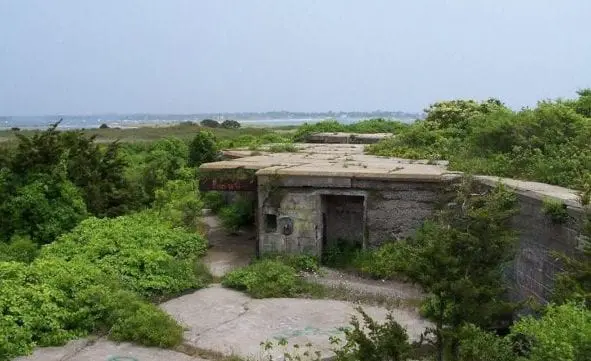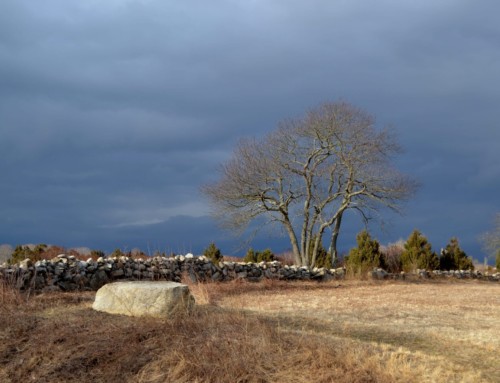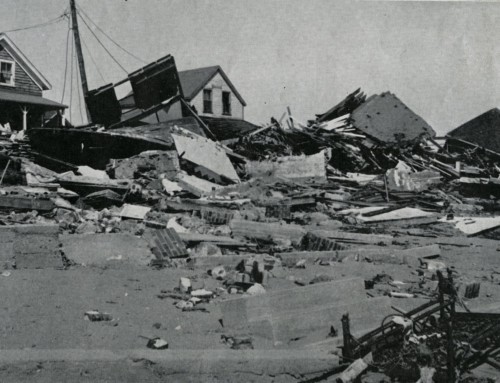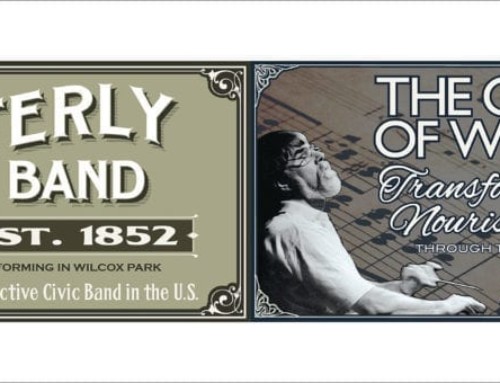If you walk out to the end of Napatree Point and take one of the trails that head into the interior you might come across some ruins almost hidden in the dense bush. If you’re wondering what these ruins are, here is their story.
Long before the first European settlers arrived in Westerly the Narragansett Indians recognized the strategic importance of Watch Hill as a lookout post. All the approaches to Long Island Sound and Fishers Island Sound can be seen from the hill. You can see Block Island, the Rhode Island coastline, Montauk Point, Long Island, Fishers Island, and Stonington Connecticut.
In colonial times a series of seven beacons were placed at strategic locations along the coast of Rhode Island to warn of possible attack by sea. The beacons consisted of long poles with a bucket of pitch that could be lit and hoisted to the top of the pole. At night the fires were visible for long distances and in the daylight the smoke could be seen. As each post could be seen from the next a warning message could be relayed rapidly up the coast to Providence.
In 1745 during the French and Indian War a watch house was built on Watch Hill which was used later by the local Westerly militia during the Revolutionary War. A breast works was built to protect the gunners of the local artillery company. This was the first fortification of the coastline in Watch Hill but not the last.
In 1884, before the advent of the Spanish American War, a joint Army-Navy board issued a report that focused public attention to the defenseless condition of our coasts and advised a defense plan for the country recommending the construction of a series of fortifications from Key West Florida to Portland Maine on the east coast and from Galveston Texas to Puget Sound Washington on the Gulf and west coasts.
The program was approved and it lasted twenty years and cost 125 million dollars.
Because of Watch Hill’s strategic location at the head of Long Island Sound Napatree Point was chosen for the proposed fort’s location. The new fort would be named Fort Mansfield in honor of Major General Joseph Mansfield, a Union officer who died in 1862 of wounds in the Civil War battle of Antietam.
In 1898 the federal government purchased 60 acres at the end of Napatree Point and the following year began construction. In 1901 Fort Mansfield was opened complete with barracks and gun emplacements. At its high point in 1902 there were 18 buildings and 228 soldiers. The guns consisted of two 8 inch B.L. rifles on disappearing carriages and two 5 inch rapid fire guns on balanced pillar mounts.
As it turned out however Fort Mansfield suffered from a fatal flaw. In 1907 a mock battle to test the forts effectiveness was held as described by the magazine Seaside Topics, “Uncle Sam let loose the dogs of war around Watch Hill this week and they did some furious barking. Fort Mansfield was the bone they wanted to chaw and according to the rules of the war games they succeeded.
The maneuvers were directed against the forts at the entrance to Long Island Sound of which Fort Mansfield is the strongest. A fleet of imaginary hostile battleships and cruisers appeared from the direction of Block Island and bombarded the fort for an hour. As the forts guns could not be trained effectively on the enemy vessels the fort was considered bested and the fleet was able to proceed to attack New York City.”
The bombardment was in plain view from the beaches and hills around the shore. Summer residents laid aside all other diversions to watch. Automobiles were drawn up along the beach road while the occupants climbed over the sand dunes for a better view. The hotels were deserted while the guests watched the powerful searchlights of the fort playing up and down the shore looking for the enemy fleet.
Colonel Charles Parkhurst had predicted the fort’s weakness and in a memorandum dated August 1907 stated “on July 22nd the battle of Fort Mansfield occurred resulting in a complete victory for the attacking fleet. The enemy navy silenced the fort from a dead angle.
The dead angle is a large area to the east of Watch Hill Point where there is enough depth to float a battleship and the forts guns cannot reach. I see no way for the fort to help itself and I believe that I could capture Fort Mansfield with a fleet of coal barges equipped with 6 inch guns.”
The mimic War of 1907, as it was dubbed, and specifically the barrage of July 22 coupled with the analysis of Colonel Parkhurst signaled the end of the short life of Fort Mansfield. In January of 1911 all but 17 men were transferred out and the fort was declared a sub-post of Fort Wright. The number dropped to 6 in 1916 and remained at the level until the property was sold to a summer resort syndicate in 1926 for $365,000.
The developer proposed subdividing the point into 674 lots but the Watch Hill community organized to stop the development and protect the point. In 1931 the syndicate could not make its mortgage payment and the land was foreclosed on by the Washington Trust Company.
Fort Mansfield was the pride of the military’s eastern defenses until her fatal flaw was demonstrated. Today an eerie silence hangs over the crumbling, graffiti covered ruins which are gradually being eroded away by wind and wave.








